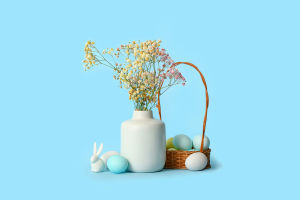Flowers, as treasures of nature, have always been an indispensable part of human life and culture.
Whether it is the gentle beauty of the first ray of sunlight falling on the petals in the morning or the soft swaying of the breeze blowing through them, flowers use their silent language to express the purest beauty of nature.
Rather than simply viewing flowers as decorations of nature, it is more fitting to consider them as nature's silent poets, weaving a world full of sensory pleasure with their colors, shapes, and fragrances.
Each flower possesses its uniqueness, just as every person is a unique individual. The splendid beauty of roses is often seen as a symbol of love, with their layered petals seemingly holding endless emotions.
In contrast, the lotus, with its noble and serene posture, represents wisdom and virtue, rising above the mundane world. The diversity of flowers is reflected not only in their appearance but also in the cultural meanings they carry.
Peach blossoms, a frequent motif in Chinese poetry, often symbolize spring and new beginnings, while chrysanthemums, known for their resilience, are often associated with strength.
However, the significance of flowers extends far beyond their symbolic and aesthetic value. From a biological standpoint, flowers represent the reproductive mechanism of the plant world.
Each flower is the reproductive organ of a plant, designed to attract insects, birds, or even the wind to aid in the spread of pollen to other flowers, ensuring the continuation of the species.
In this way, flowers are not just works of art in nature; they are essential mediums for the survival of life. The shape, color, fragrance, and even the timing of a flower’s bloom are all intricate adaptations developed to attract pollinators.
Creatures such as bees, butterflies, and hummingbirds are drawn to these blooms, supporting their pollination process while receiving nectar in return. This symbiotic relationship is an important part of the natural ecosystem, highlighting the complex and delicate balance between organisms.
When we observe a flower closely, we can see that every detail is filled with remarkable and intricate designs. The arrangement of petals often follows the famous "golden ratio," a pattern frequently found in nature.
This perfect geometric structure is not only visually beautiful but also maximizes the flower's functionality, such as attracting pollinators and protecting the stamens and pollen within. Some flowers have even developed astonishing strategies through evolution.
For instance, certain orchids mimic the appearance of insects to attract male insects for "mating," facilitating the spread of pollen. This art of camouflage demonstrates the profound wisdom of nature and reminds humans of their insignificance when confronted with the complexity of evolution.
Flowers hold an irreplaceable position not only in the biological world but also in human spiritual culture. From ancient times to the present, the connection between flowers and humans has remained inseparable.
Whether in the form of wreaths in ceremonies or bouquets in traditional festivals, flowers have long carried humanity's hopes and desires for a better life. In different cultures, flowers take on distinct symbolic meanings.
For example, in Japanese culture, cherry blossoms represent the transient beauty of life, while in ancient Greece, laurel trees were symbols of victory and glory. By attributing unique meanings to flowers, humans express their thoughts on philosophical themes such as life, love, death, and eternity.
In addition to their symbolic meanings, flowers have a profound impact on the emotional lives of humans. People send flowers to express love, and bouquets often serve as messengers of various emotions such as celebration, blessings, or mourning.
Roses, for instance, symbolize love, but the meaning changes with color: red roses convey passionate love, while white roses signify purity.
The language of flowers has played a significant role across different eras and cultures. Through this silent communication, flowers provide a way for people to express emotions, transcending the limitations of spoken language.
Flowers are not only part of the natural world; they are also symbols of life, culture, and philosophy. They participate in nature's reproduction and cycles in their distinct ways, while also holding an irreplaceable place in humanity’s spiritual realm.
The blooming and withering of each flower is nature’s performance, and we, as its audience, can learn profound truths about life, time, and existence. Whether admiring flowers in a garden or walking through fields, flowers have a unique way of reminding us that beauty and fragility coexist—fleeting, yet eternal.


